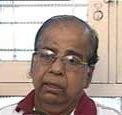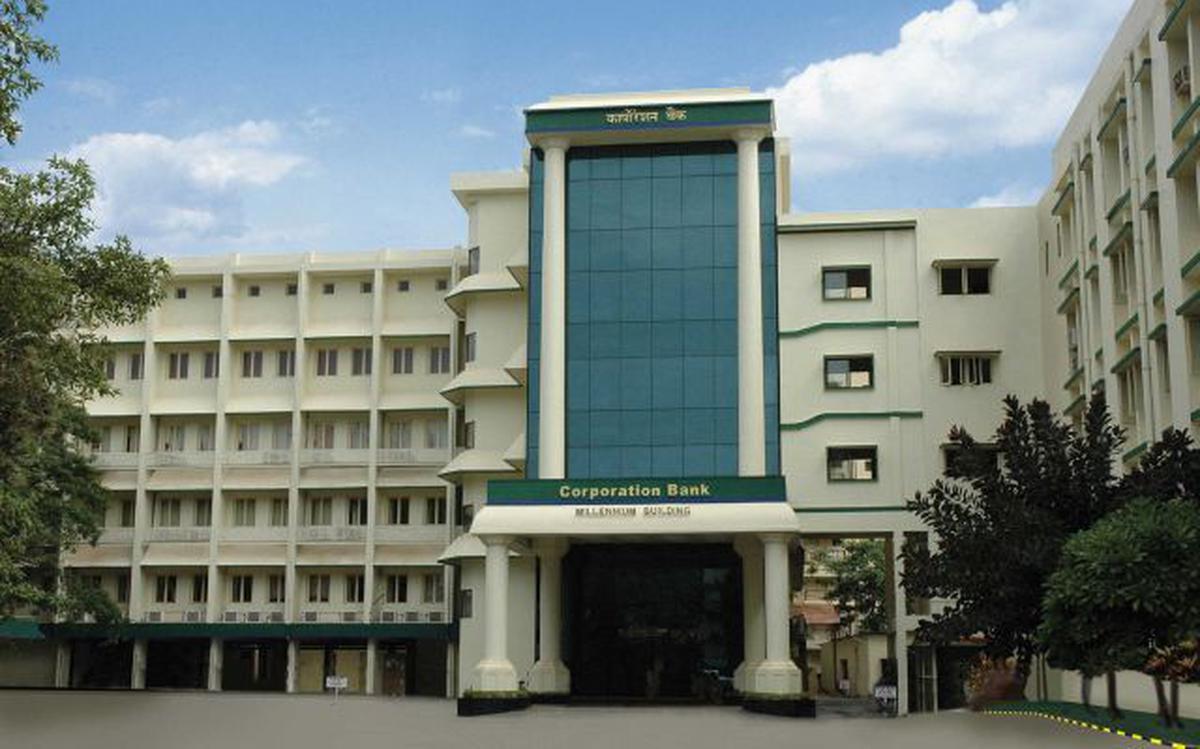A Saga Comes to an End in the Cradle of Indian Banking
The laterite soil of the district of Dakshina Kannada – or 'south Canara' as it was referred to before Independence – is poor for crop cultivation.
Instead, in the 20th century, its enterprising communities grew a remarkable crop of banks and bankers: Canara Bank (established in 1906 at Mangaluru), the erstwhile Corporation Bank (1906, Udupi), Karnataka Bank (1924, Mangaluru), the erstwhile Syndicate Bank (1929, Manipal) and the erstwhile Vijaya Bank (1931, Mangaluru).
Each bank was initially set up by entrepreneurs to serve their own castes: the Bants (like Shetty, Hegde, Alva), Goud Saraswat Brahmins or 'GSBs' (Shenoy, Kamath, Pai) and the Kannadiga/Tulu Brahmins (Bhat, Rao). However, they eventually developed into full-fledged banks, serving the general public.
Corporation Bank, however, was founded by Haji Abdulla but after his exit, the GSBs played a pivotal role. As a result, Dakshina Kannada – along with the district of Udupi, which was carved out of it in 1997 – became known as the "cradle of Indian banking".
Katapadi Raghunath Shenoy, one of that remarkable crop of bankers, died on January 8, 2022 in Mangaluru after a brief illness. Shenoy had risen to be executive director (1992-1997) of the erstwhile Corporation Bank and then chairman and managing director (1997-2002) of the erstwhile Lakshmi Vilas Bank.
An account of his life gives us glimpses of a significant phase of Indian banking, one which had far more dynamism than it usually gets credit for.

K.R. Shenoy. Source: KR Shenoy Family Photo Collection
K.R. Shenoy was born in 1943 at Udupi, in what was then known as South Canara district. He started his career as a central banker and was deputed to the then private sector Corporation Bank, headquartered in Mangalore, which he subsequently joined, rising to the number two slot after its nationalisation.
Following the completion of his first five-year term, the government, sadly, failed to renew or elevate him. He then reverted to the private sector, where he was appointed Chairman and Managing Director (CMD) at the Karur-based Lakshmi Vilas Bank (LVB).
After a successful term at LVB, he declined another term to be with his family in Mangaluru. He served as non-executive chairman at the Ahmedabad-headquartered Astral Ltd. from 2006 till August 2020 and was also associated with the non-government organisation, Myrada.
He was a gentleman-banker of the old school, whom this author had the privilege of interacting with over the last 25 years. Beneath his courteous demeanour and soft-spoken, measured tone was a thoroughbred professional endowed with a sharp analytical mind. While he had the conservatism expected of a banker, he also had an acute sense of the need to exploit business opportunities, nurture young talent and inspire general staff to achieve objectives.
Unlike many corporate honchos, he believed in maintaining a low media profile, and throughout his career he remained in the shadows. He was respectful to his seniors as well as his juniors, and he had the rare quality of providing the latitude to his juniors to voice contrarian views; once convinced, he would incorporate their suggestions.
In the early 1990s this author, fresh from a Master of Arts in international studies, was studying how to analyse corporate annual reports, under the mentorship of the late N.L. Hingorani who is former professor of Udaipur University and former director of the National Institute of Bank Management. I was learning how managements disguise facts and massage financial accounts to cloak their actual performance.
Also read: What Should the Future of Indian Banking Look Like?
In those days, predating the introduction of the Income Recognition and Asset Classification (IRAC) norms by the Reserve Bank of India, analysing bank annual accounts was a Herculean challenge, as there were no disclosures on non-performing loans, or provisions for bad debts, investments and income tax. Hence, reported profits could not be taken seriously, as it was left to management’s discretion to make the necessary bad debt provisions prior to the reporting of interest income on loans.
Of the government banks, only the State Bank of India was listed, but it was prior to their domestic issue, and hence there was negligible trading; the same was the case with the few listed old private sector banks. While studying many bank accounts, Corporation Bank’s superior performance and profitability stood out. Having a healthy distrust of banks’ financial accounts, this author decided to investigate.
Being Mangaluru-headquartered, the senior management of Corporation Bank was relatively inaccessible to a Mumbai-based analyst. Fortunately, I was introduced to Premanand Kamath, a government securities dealer in the bank’s treasury division in Mumbai. He, in turn, opened the doors and provided much needed access to the senior management, especially the amazing smoothly-coordinating duo of K.R. Ramamoorthy, CMD, and K.R. Shenoy, the executive director or ED of the bank. In a difficult environment, when there were doubts about the bank’s independent existence, and rumours of a merger with a larger government bank, this duo successfully transformed a small Mangaluru-headquartered bank and put it on a firm footing.

K.R. Ramamoorthy. Photo: Video screengrab
In nationalised banks, it was common for the CMD and the ED to come from different banks, with no prior experience of either working with each other or with the staff of the bank. There were instances of the CMD and ED working at cross purposes to the detriment of the bank’s progress.
Fortunately, both Shenoy and Ramamoorthy were Corporation Bank officers, and had worked together prior to their respective elevation to CMD and ED. They were secure in their positions and had confidence in each other’s capabilities. When Ramamoorthy was appointed as CMD and Shenoy was elevated as ED, the latter made it clear that he would function as a loyal number two in a chief operating officer role, where he would focus on the internal functions of the bank. Both of them were ably assisted by K.R. Mallya, the general manager. The trio were referred to as the ‘three KRs’.
It speaks volumes of the leadership in the 1970s of the then private sector Corporation Bank that its chairman and managing director, N.N. Pai, selected Ramamoorthy, then working at Lipton, as the bank’s company secretary in 1975. He was later carefully groomed by Pai and subsequently by Y.S. Hegde for the leadership position.
Similarly, Shenoy was an RBI officer who went on deputation to Corporation Bank in 1973, and in October 1978 left the RBI to join the bank. Shenoy became Pai’s executive assistant, as he shifted his career from central banking to commercial banking. When Ramamoorthy and Shenoy ascended the commanding heights of Corporation Bank, they were equipped to work smoothly with one another.

Corporation Bank headquarters in Mangaluru.
The secret of Corporation Bank’s performance in the period FY1991 till FY1997 was a tight control on loan quality, while focusing on the relative safety of investing and trading in government securities, corporate bonds and commercial paper, to the extent that in FY1994 and FY1995, interest income from investments was more than interest income from loans. Herein lies the story of how Ramamoorthy and Shenoy were early movers in the Indian banking industry in domestic treasury operations.
Following the submission of the Chakravarty Committee to review the working of the monetary Ssstem in April 1985, the government and RBI began implementing some of its recommendations. Around 1989, Shenoy selected Mohan Shenoi (former president and chief operating officer, Kotak Mahindra Bank) to attend a one and half-year post graduate course at the NIBM. In his thesis he recommended that the bank should set up a treasury and investment division. On the completion of his course Mohan Shenoi was posted at the HQ in Mangaluru, reporting directly to K.R. Shenoy, and the bank was considering his proposal.
One day he was called to meet K.R. Shenoy but was made to wait outside his office for an inordinate period of time. When he was finally ushered in the young Shenoi brashly remarked to the elder Shenoy, “This is not how the future treasury based in Bombay can operate, waiting unnecessarily from orders from higher authorities in Mangalore.” Shenoy heard him patiently and ended the meeting. Shenoi returned home wondering whether his impertinence had cost him his job.
Two days later, Shenoi was summoned for another meeting with K.R. Shenoy and this time he was ushered promptly into the latter’s cabin. The elder Shenoy handed his protégé two tickets to Bombay, with instructions to set up the bank’s domestic treasury operations and choose a suitable location.
Mohan Shenoi set up Corporation Bank’s domestic treasury with the full authority to conduct day-to-day transactions without interference from the head office. Though adequate controls were put in place to monitor operations, the objective was clear: the bank had to actively trade in government securities. Treasury operations became a major profit centre for the bank. This was radical thinking for a government bank, as most banks bought securities to maintain their statutory liquidity ratio and held them to maturity. Subsequently, Corporation Bank’s domestic treasury branched out into investing in corporate debentures and bonds, and the bank built a sizeable commercial paper book for a bank of its size.
Another interesting feature in Corporation Bank in the early 1990s was its significant fee income. To an outside analyst like this author, it defied explanation that a small bank based in Mangaluru with limited corporate exposure could be reporting such high fee income. In those days, prior to the entry of the new private sector banks, the practice of reporting part of interest income on loans and front-loading it as fees was non-existent. The tale of its fees lies in the unexciting back office function of inter-branch reconciliation of accounts, where Shenoy played a critical role.
Also read: As RBI and Kotak Smoke Peace Pipe, What Does it Say About the State of Banking Regulation?
In 1973, when the RBI sent K.R. Shenoy on deputation to Corporation Bank, one of his mandates was to set up robust internal systems, and the bank gave tremendous importance to inter-branch reconciliation of accounts. As accounts were manually reconciled, many banks had huge inter-branch non-reconciliation issues, but Corporation Bank did not suffer from such problems. When Citibank started offering cash management services to Indian companies, it tied up with Corporation Bank on account of its excellent back office systems, apart from its branch network. K.R. Mallya took charge of cash management, and also commenced directly approaching companies. It was account of this service that the bank booked handsome fees.

File Photo: Pedestrians walk past the facade of a Citibank building in New York July 14, 2014. REUTERS/Lucas Jackson//File Photo
Being a small bank, Corporation Bank was unable to lend to large companies; but by offering cash management services, not only could the bank enhance its fees, but also gain access to blue chip companies. The cash management services, combined with an active domestic treasury which invested and traded in corporate securities, enabled the bank to cement its commercial relationship with corporate India. To achieve these objectives took a vision, identifying key staff and providing them with the required training and exposure to be successful in these endeavours. Being a government bank, Corporation Bank faced severe restrictions in acquiring outside talent. The credit should go to the leadership of the banks in the 1970s, who identified individuals like Ramamoorthy and Shenoy to join the bank; they in turn groomed their juniors as future leaders for the Indian banking industry.
The first Corporation Bank cadre officer to be selected as CMD of another government bank was V. Leeladhar, who was appointed CMD of Vijaya Bank, and thereafter of Union Bank of India; he later became RBI deputy governor. He was followed by M.V. Nair as CMD first of Dena Bank and then of Union Bank of India; M.D. Mallya became CMD of Bank of Maharashtra and thereafter of Bank of Baroda; K.R. Kamath was appointed CMD of Allahabad Bank and then took charge at Punjab National Bank; M. Narendra became CMD of Indian Overseas Bank; and CVR Rajendran became CMD of Andhra Bank and is at present CEO of the private sector CSB (erstwhile Catholic Syrian Bank).
For a small bank to provide so many leaders to the industry in a short time span is a phenomenal achievement.
Despite Ramamoorthy’s and Shenoy’s impeccable integrity, professionalism and their contribution in making Corporation Bank a model bank, the irony was that the government declined to renew their tenure at Corporation Bank or elevate them to a larger bank. The issue was that, in the Harshad Mehta scam, even though Corporation Bank did not incur any losses from the transactions, a few of the Bankers’ Receipts passed through the bank. And this was pointed out in the RBI Inspection Report. The Central Vigilance Commission was unwilling to clear Shenoy’s name, even though he received and accepted the government’s appointment letter for CMD of Andhra Bank.
Also read | 'Scam 1992': Bulls, Bears and the Shadow World of High Finance
Although this author was in telephonic contact with Shenoy for some time, we first met at the end of his tenure at Corporation Bank on the tarmac of Mangaluru airport, as I was coming to meet the senior management of the bank while he unfortunately had a prior outstation engagement. When I enquired about his future plans, he replied, “I cannot afford to retire.”
Fortunately, the private sector recognised the talents of Ramamoorthy and Shenoy as professional bankers and turnaround experts, and with the RBI’s blessing Ramamoorthy took charge as executive chairman and CEO of Vysya Bank while Shenoy was appointed CMD of Lakshmi Vilas Bank. Both banks were difficult assignments, but they were able to stabilise operations.
Another irony was that, despite both of them laying a strong foundation for Corporation Bank which their immediate successors benefitted from and took forward, from FY2013 onwards, on account of poor leadership, the bank’s performance sharply deteriorated. Finally in April 2020 the bank lost its independent identity, and was merged with Union Bank of India. A worse fate befell Lakshmi Vilas Bank, again on account of lacklustre leadership and promoters’ interference, as it was put under a moratorium by RBI in November 2020, and finally acquired by DBS.
Shenoy was a team player, who did not covet media attention and was a solid number two to Ramamoorthy in Corporation Bank. He demonstrated the qualities of a leader when he stabilised the operations at LVB. Indeed, his professional life as a banker reaffirms that commercial banking is a team effort, and while the leader puts forth the strategy, it requires a smoothly functioning team to implement it, while nurturing young talent and keeping the customers’ as well as the general staff’s interest, a lesson that some of the new private sector banks seem to have forgotten.
In today’s environment, the contribution of government banks to the development of India’s economy is largely forgotten. They are derided for ‘phone banking’, while the new private sector banks and their larger than life ‘iconic’ CEOs are glorified in the media through ‘exclusive’ interviews and ‘Best Banker’ awards.
When it comes to prominent private sector banks, the media deliberately fails to highlight mismanagement until it becomes a crisis, and ignores the high employee attrition, which is an indicator of staff harassment and discontent. Government banks and bankers of the past had some failings, but the public and the media would do well to recognise the seminal contribution of certain government banks and bankers such as K.R. Shenoy, who combined conservatism in lending with dynamism in developing new profit centres and nurturing the general staff and their customers.
Their exploits may remain unsung but their deeds will not be forgotten.
Hemindra Hazari is an independent banking analyst.
This article went live on January twenty-third, two thousand twenty two, at twenty-seven minutes past eleven in the morning.The Wire is now on WhatsApp. Follow our channel for sharp analysis and opinions on the latest developments.




